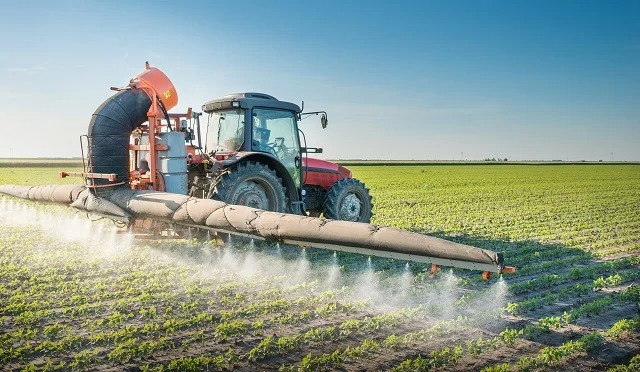
AGRICULTURAL production for the 2010/2011 farming season is in the hands of the farmers as conditions for success, such as favourable rains and availability of inputs, have improved compared to the last few years.
Unlike past seasons when the agricultural sector had to muddle through perennial shortages of inputs and funds, there has been a significant improvement in planning for the coming season.Government has provided US$30 million towards the support of smallholder farmers, but Ngoni Masoka, permanent secretary in the Ministry of Agriculture, Mechanisation and Irrigation Development, said more should be done. “In Zimbabwe, it is necessary that the government supports our smallholder farmers earnestly if we are to restore the food basket status of the country and achieve food security. It has to be a deliberate policy to support our farmers just like our neighbours are doing,” Masoka said.The president of the Zimbabwe Farmers’ Union, Silas Hungwe, said there was additional support for tobacco and cotton farmers who had entered into contracts with buyers.“However, there is no support for the small grains, but government is making subsidised fertiliser available to farmers,” Hungwe said. “This fertiliser is charged at US$15 per bag and is available through GMB depots.”Government provides subsidised fertiliser to communal farmers to try and improve food security in the country. Once a breadbasket of the region during the first two decades of Independence, Zimbabwe had become a beggar as it faced serious grain deficits in the last three years as a result of erratic rains and shortages of inputs induced by the economic downturn. In addition, production also plummeted when Zanu PF supporters forcibly took commercial farms from white farmers during the land reform programme. For the last 10 years, Zimbabwe has been relying on food handouts from aid agencies.Agriculture is the centre of gravity for the economy contributing 19% of the gross domestic product (GDP) last year. GDP is the most important measure of economic activity in the country as it is the crossing point of expenditure, output and income. While the input costs are still very high, compared to regional averages, farmers are able to access fertiliser, chemicals and seed on time. Transportation of the inputs, Hungwe said, had improved as farmers now access them close to their farms.Input costs, as is the case with all real sectors, remain high with a 50kg bag of fertiliser costing US$30 compared to the regional average of around US$7 and this may weigh down a continued growth of the sector which expanded 18,8% this year against an anticipated 10%.In 2009, agriculture grew 14,9% from a 39,3% contraction a year earlier at the height of the economic downturn. This year’s growth was mainly driven by tobacco which, to the surprise of many, doubled to 120kgs on the 2009 figure. More than US$320 million was realised from the sale of the crop this year.The acting chief executive officer of the Tobacco Industry and Marketing Board (TIMB), Andrew Matibiri, said planting for the next crop had started.“There are no figures as to how much of the crop would be produced,” said Matibiri. “However, indications from the seed sales show us that we can have a minimum of 90 million kgs.”Matibiri said 72% of the crop that was sold this year came from contract farming with the remainder coming from farmers who “look after themselves” as they finance their own crop.Agribank and FBC Bank on Wednesday floated tobacco bills worth US$10 million aimed at supporting farmers. Other banks have different funding mechanisms. Matibiri added that they would get a clearer picture by mid next month when they would have collected the information from all tobacco growing districts.Hungwe said government had also initiated a programme where farmers without the capacity to buy inputs would work on community projects under the supervision of councillors and local leadership and get seed and fertiliser in return.“Farmers are also entering contracts with other companies where they receive inputs and will repay after harvests,” said Hungwe.This could be a departure from the heavy dependency on government handouts farmers had become used to since the turn of the century. Government and donors said they would assist 956 000 communal (A1), old resettlement and vulnerable farmers with inputs to cater for 0,25 ha each. Inputs in the basket include a 50kg bag of compound D fertiliser, 50 kg bag top dressing fertiliser and 10 kg of maize seed.Masoka, however, bemoaned the fact that government support to the agriculture sector had been hovering below 10% of the national budget and that in the current season over half a million smallholder farmers will not receive support.“Despite the immense contribution of the agriculture sector to the national economy, a record of vote appropriations indicates that agriculture received between 2% and 7,5% of the national budget between 1995 and 2010. In the 2010/2011 season, 575 185 smallholder farmers will not receive inputs support,” Masoka added.It was predicted at the 14th Southern Africa Regional Climate Outlook Forum held in August there was a high probability that Zimbabwe would receive normal to above normal rains during the 2010/2011 season.The forum, which was held in Harare comprised climate scientists from the National Meteorological Hydrological Services within the Southern African Development Community region working with the Sadc Drought Monitoring Centre.While the conditions are supportive of a successful agricultural resurgence, the residue of the preceding season’s problems could dent a rapid growth. One area which faced problems was cotton selling where there was a standoff between the farmers and the buyers.Cotton farmers held on to their crop season asking for “reasonable” prices as the buyers, who were also contractors offered very low rates. It required government intervention, setting the price at a minimum 35c per kilogramme.Things got worse when new players, especially Sino-Zimbabwe, came in literally reaping where they did not sow as they started buying cotton bypassing the contractors. This threatened the viability of the sector, with no comprehensive mechanism, such as passing the proposed legislation that sought to protect the farmers and contractors.Apart from the legislation, other stakeholders such as the Zimbabwe Electricity Supply Authority (Zesa) could also play a decisive role in the success of the agricultural season. Zesa has on many occasions promised farmers that they would not be affected by load shedding but this has not been honoured.
Leonard Makombe / Paidamoyo Muzulu











